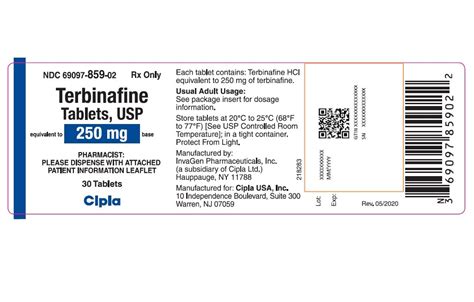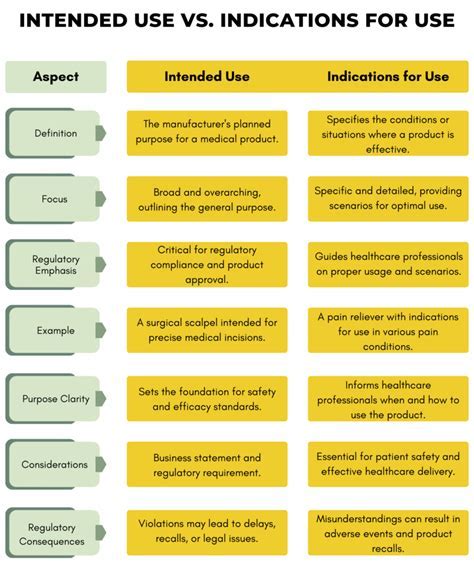Intro
Learn about Terbinafine 250mg Tablet, an antifungal medication treating fungal infections, including ringworm, athletes foot, and onychomycosis, with information on dosage, side effects, and interactions.
Terbinafine 250mg tablet is a medication used to treat various fungal infections, and understanding its uses, benefits, and potential side effects is crucial for patients. Fungal infections can range from mild to severe and affect different parts of the body, including the skin, nails, and scalp. The importance of treating these infections lies in preventing their spread and reducing the risk of complications. In this article, we will delve into the details of Terbinafine 250mg tablets, exploring their mechanism of action, indications, dosage, and safety profile.
The treatment of fungal infections has evolved over the years, with the development of antifungal medications like Terbinafine. This drug belongs to the class of allylamines, which work by inhibiting the synthesis of ergosterol, an essential component of fungal cell membranes. Without ergosterol, fungal cells cannot survive, leading to the clearance of the infection. Terbinafine's effectiveness against a wide range of fungal pathogens, including dermatophytes, yeasts, and molds, makes it a valuable treatment option.
Fungal infections can significantly impact a person's quality of life, causing discomfort, pain, and emotional distress. For instance, onychomycosis, a fungal infection of the nails, can lead to thickening, discoloration, and brittleness of the nails, affecting one's self-esteem. Similarly, tinea infections of the skin can cause itching, redness, and cracking, making everyday activities challenging. The availability of Terbinafine 250mg tablets offers hope for patients suffering from these conditions, providing a convenient and effective treatment option.
Introduction to Terbinafine 250mg Tablets

Terbinafine 250mg tablets are oral antifungal medications, each containing 250mg of the active ingredient Terbinafine hydrochloride. They are usually prescribed for the treatment of fungal infections of the toenails and fingernails, as well as skin infections like tinea pedis (athlete's foot), tinea cruris (jock itch), and tinea corporis (ringworm). The standard dosage regimen involves taking one tablet once daily, with or without food, for several weeks or months, depending on the type and severity of the infection.
How Terbinafine 250mg Tablets Work
The mechanism of action of Terbinafine involves the inhibition of squalene epoxidase, an enzyme necessary for the conversion of squalene to lanosterol in the fungal sterol biosynthesis pathway. This inhibition leads to the accumulation of squalene and the depletion of ergosterol, resulting in the disruption of the fungal cell membrane and ultimately, the death of the fungal cell. Terbinafine's high specificity for fungal squalene epoxidase minimizes its effects on human cells, reducing the potential for adverse effects.Indications and Usage

Terbinafine 250mg tablets are indicated for the treatment of onychomycosis (fungal infections of the nails) caused by dermatophytes, such as Trichophyton rubrum and Trichophyton mentagrophytes. They are also used to treat tinea infections of the skin, including tinea pedis, tinea cruris, and tinea corporis. The effectiveness of Terbinafine in treating these conditions has been demonstrated in numerous clinical trials, showing significant improvement in symptoms and quality of life for patients.
Dosage and Administration
The dosage of Terbinafine 250mg tablets varies depending on the type of fungal infection being treated. For the treatment of onychomycosis, the recommended dosage is 250mg once daily for 6 weeks for fingernail infections and 12 weeks for toenail infections. For tinea infections of the skin, the treatment duration is typically shorter, ranging from 2 to 6 weeks. It is essential to complete the full treatment course as prescribed by the healthcare provider to ensure the infection is fully cleared and to prevent relapse.Benefits and Effectiveness

The benefits of using Terbinafine 250mg tablets include their high effectiveness in treating fungal infections, convenience of once-daily dosing, and relatively favorable safety profile. Clinical trials have shown that Terbinafine achieves significant cure rates for onychomycosis and tinea infections, improving symptoms and quality of life for patients. Additionally, Terbinafine's oral formulation allows for systemic treatment, reaching the site of infection directly and reducing the risk of treatment failure associated with topical treatments.
Potential Side Effects and Interactions
While generally well-tolerated, Terbinafine 250mg tablets can cause side effects, including gastrointestinal disturbances, headache, and rash. Rare but serious side effects include liver enzyme abnormalities, neutropenia, and severe skin reactions. It is crucial for patients to discuss their medical history and any concurrent medications with their healthcare provider before starting Terbinafine, as drug interactions can occur. For example, Terbinafine can increase the levels of certain medications like caffeine and decrease the levels of others like cyclosporine.Safety Profile and Precautions

The safety profile of Terbinafine 250mg tablets is well-established, with a long history of use in treating fungal infections. However, precautions are necessary, particularly in patients with liver or kidney disease, as Terbinafine is metabolized by the liver and excreted by the kidneys. Patients should also be monitored for signs of liver damage, such as jaundice or dark urine, and report any unusual symptoms to their healthcare provider promptly.
Special Populations
Terbinafine 250mg tablets can be used in adult patients, including the elderly, but dose adjustments may be necessary in patients with renal impairment. The use of Terbinafine in pediatric patients is limited, and its safety and efficacy in children under 18 years have not been fully established. Pregnant or breastfeeding women should use Terbinafine with caution, as there is limited data on its use in these populations.Conclusion and Future Directions

In conclusion, Terbinafine 250mg tablets offer a convenient and effective treatment option for patients suffering from fungal infections. Their mechanism of action, indications, dosage, and safety profile make them a valuable choice for healthcare providers. As research continues to advance, we can expect to see the development of new antifungal medications and treatment strategies, potentially improving outcomes for patients with these conditions.
Final Thoughts
The importance of treating fungal infections cannot be overstated, given their potential to cause significant morbidity and impact quality of life. Terbinafine 250mg tablets represent a significant advancement in the treatment of these infections, providing a relatively safe and effective option for patients. As we move forward, it is essential to continue monitoring the safety and efficacy of Terbinafine and other antifungal medications, ensuring that patients receive the best possible care for their fungal infections.What is Terbinafine 250mg used for?
+Terbinafine 250mg is used to treat fungal infections of the nails and skin, including onychomycosis and tinea infections.
How long does it take for Terbinafine to work?
+The duration of treatment with Terbinafine varies depending on the type of infection, ranging from 2 to 12 weeks or longer for nail infections.
Can I take Terbinafine with other medications?
+It is essential to discuss all medications, including over-the-counter drugs and supplements, with your healthcare provider before starting Terbinafine, as drug interactions can occur.
We invite readers to share their experiences with Terbinafine 250mg tablets, ask questions, or provide feedback on the article. Your input is invaluable in helping us improve and expand our content to better serve the needs of our readers.
